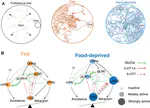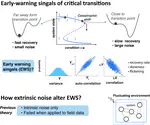I am an Associate Research Scientist at the Center for Computational Neuroscience, Flatiron Institute. Driven by a broad interest in theoretical and computational neuroscience, my research seeks to understand the fundamental principles driving neural computation and cognition.
Current Research Focus:
- Sensory processing and representation: How does the brain efficiently perceive and encode the external world?
- Memory organization and update: How does the brain store and dynamically update memories to support adaptive behavior and lifelong learning?
- Algorithmic foundations of computation: What are the underlying algorithms the brain uses to solve complex problems?
Background:
Prior to joining Flatiron Institute, I held a postdoctoral fellowship at Harvard’s John A. Paulson School of Engineering and Applied Sciences where I worked with Cengiz Pehlevan. I earned my PhD in condensed matter physics from Peking University where I was advised by Chao Tang and Yuhai Tu at the Center for Quantitative Biology. Before that, I pursued my undergraduate studies in physics at Central China Normal University in Wuhan.
I will join the Institute of Natural Sciences at Shanghai Jiao Tong University as a tenure-track Associate Professor starting from January 2025.
If you or someone you know is interested in working with me, please drop me an email: qinss.pku(at)gmail.com.
- Theoretical and Computational Neuroscience
- Quantiative and Systems Biology
- Physics of life
-
Ph.D in Condensed Matter Physics, 2019
Peking University, Beijing, China
-
BSc in physics, 2012
Central China Normal University, Wuhan, China
Publications
All Publications:
View / filter all academic publications
Featured Publications (top 5):
Latest Publications (last 5):
Projects
Talks
All Talks:
View all talks/posters
Latest Talks:
Contact
- qinss.pku(at)gmail.com
- 160 5th Ave, New York City, New York 10010
- Shanshan Qin






